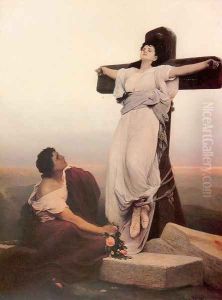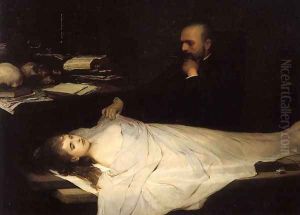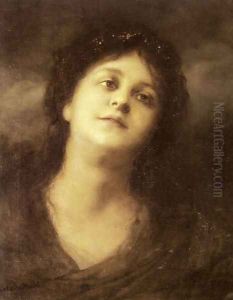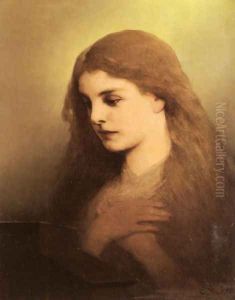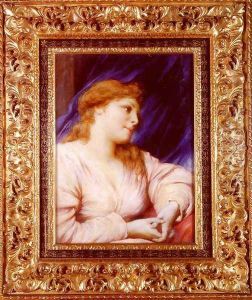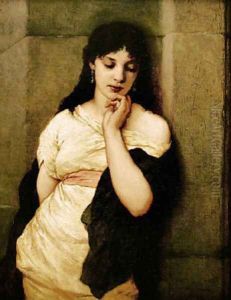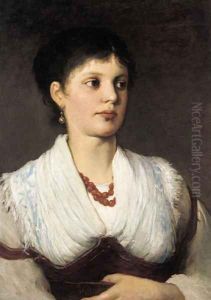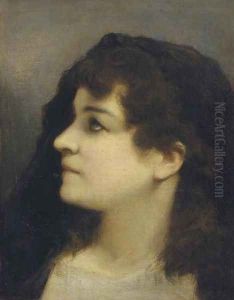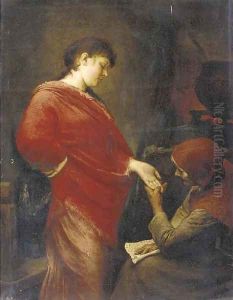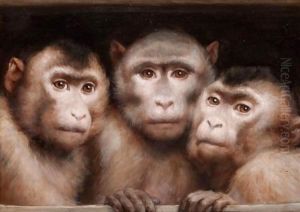Gabriel Cornelius Ritter von Max Paintings
Gabriel Cornelius Ritter von Max was a notable Bohemian painter and an influential figure in the art world of the late 19th century. Born on August 23, 1840, in Prague, which was then part of the Austrian Empire, he was the son of sculptor Joseph Max and showed an early inclination towards the arts. He first studied at the Prague Academy under Eduard von Engerth before moving to the Vienna Academy, where he was mentored by Christian Ruben. Max's initial works were characterized by historical and religious themes, a common trend of the period.
After his studies in Vienna, Max moved to Munich in 1867, which was at the time a vibrant artistic hub. There, he continued to develop his artistic style, which began to take on a fascination with the mystical and the psychological. Max was particularly interested in themes of spirituality, the human psyche, and the relationship between body and soul, often exploring these concepts through the symbolism in his paintings. His works often depicted women, martyrs, and scenes that provoked deep contemplation on the nature of human experience.
Max became a member of the Munich School, a group of like-minded artists who were part of the broader Symbolist movement. His paintings during this period often featured complex narratives that required viewers to engage with them intellectually as well as emotionally. Some of his notable works include 'The Lion's Bride' (1867), which explores themes of love and death, and 'The Anatomist' (1869), reflecting his interest in science and the human body.
In addition to his painting, Max was an avid collector of ethnographic artifacts and had a particular interest in primate research, which influenced some of his work, such as his series of paintings on the theme of 'Monkeys as Judges of Art'. His home in Munich became a salon for intellectuals and artists, where discussions on art, philosophy, and science were common.
Gabriel Max was also an influential teacher, taking up a professorship at the Munich Academy, where he taught many students who would go on to become successful artists themselves. Despite the evolution of art movements, Max remained committed to his unique vision and continued to paint until his death on November 24, 1915, in Munich. His legacy is that of a painter who bridged the gap between academic painting and the symbolist movement, leaving behind a body of work that continues to be studied and admired for its depth and originality.
